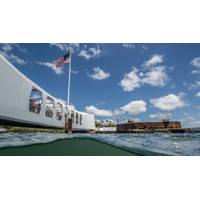
Oil Leaking from USS Arizona Could Provide Guidance for Thousands of WWII Shipwrecks
A new study published in Marine Pollution Bulletin shows that oil is still seeping from the wreck of the USS Arizona, more than 80 years after its sinking at Pearl Harbor. The study focuses on samples collected by the National Park Service in 2016 and 2018.Researchers, led by the University of Houston and Woods Hole Oceanographic Institution (WHOI), analyzed oil samples collected from multiple leak points on the sunken battleship, using advanced molecular fingerprinting techniques. The results confirm the oil is a heavy fuel oil refined from California crude, consistent with U.S. Navy fueling practices
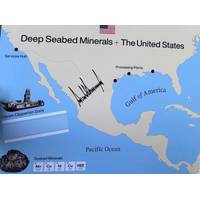
First Deep-Sea Mining Company Asks Trump for International Permit
THE HEARINGThe congressional hearing was organized by Republicans, many of whom support the nascent deep-sea mining industry."(It) can significantly help America buck the supply chain yoke placed on us by China and re-establish mineral independence," said Representative Paul Gosar, an Arizona Republican.Democrats pushed back, calling deep-sea mining uneconomical and a form of "subsidized plunder" of the world's oceans."The industry's financial models are based on wildly optimistic assumptions and fail to reflect the volatility and reality of global mineral markets
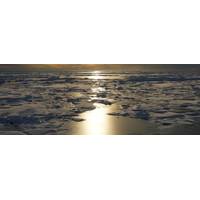
An Arctic “Beyond Recognition” Expected by 2100
of the study. “It’d be amazing if we could become more aware of this power and the responsibility that goes with it, as the future of the Arctic truly lies in our hands.”Other co-authors on the paper included Jackie Dawson of the University of Ottawa, Edward A.G. Schuur of Northern Arizona University, Dorthe Dahl-Jensen of the University of Manitoba and University of Copenhagen, and Céline Giesse of the University of Hamburg.

First Solar Bars Use of Deep-Sea Minerals
First Solar agreed to refrain from using minerals mined from the deep sea, an early win for shareholder environmental activists and a sign their agenda might make progress despite opposition from U.S. President Donald Trump's administration.The Tempe, Arizona-based photovoltaic manufacturer will keep the minerals out of its supply chain "until scientific findings are sufficient to assess the environmental risks of this potentially devastating new mining process," according to a summary of the agreement provided to Reuters by advocacy group As You Sow. In return, the group withdrew a
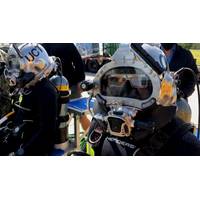
US Navy Divers Get Augmented Vision Display
along a marina during the disaster.Navy and Coda Octopus engineers also employed the DAVD 3D sonar systems to assist in salvage efforts after the March 2024 collapse of Baltimore’s Francis Scott Key Bridge. And DAVD was instrumental in efforts to map the murky waters surrounding the sunken USS Arizona. The purpose was to help U.S. Pacific Fleet and the National Park Service inspect the condition of submerged, severely degraded construction moorings used to build the memorial in the 1950s.Potential upgrades to DAVD could include GPS for georeferencing (relating a digital map or image to geographic
Podcast: Fascinated by Shipwrecks; USS Monitor Digitally Reimagined
design. He has led NOAA archaeological expeditions in the Florida Keys, the Great Lakes, California, the Northwestern Hawaiian Islands, Alaska, and USS Monitor. He’s also participated in projects including a sunken Boeing B-29 Superfortress in Lake Mead, a Civil War blockade runner in Bermuda, USS Arizona, and was most recently part of an expedition to RMS Titanic. Tane’s projects have used technical diving, remotely operated vehicles (ROVs), autonomous underwater vehicles (AUVs), and manned submersibles. Watch Fascinated by Shipwrecks, Episode 5, here

Shipwreck Podcast: Exploring Tragedy, History & Humanity with James Delgado
when he was exposed to the buried San Francisco Gold Rush ship Niantic while working for the National Park Service.He also gives moving accounts of famous shipwrecks that have had a profound emotional impact on him. These include Clotilda, the last known U.S. slave ship to bring captives to America, USS Arizona, and the sunken ships at Bikini Atoll in the Marshall Islands, the site of nuclear bomb tests between 1946 and 1958. Jim also talks ca-reer advice and imparts important life lessons wrapped up in the context of his work.About James DelgadoJames Delgado, Ph.D. is among the world’s leading experts
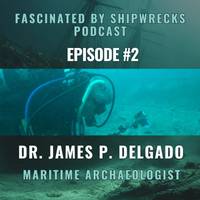
SHIPWRECK PODCAST: Exploring USS Stewart with James Delgado
archaeolo-gist on two TV series: Eco Nova’s The Sea Hunters (2002-2006), and National Geographic's Drain the Oceans se-ries (2018-2023). Delgado has literally sailed the seven seas and has been an integral part of over 100 shipwreck investigations, including USS Monitor, USS Independence, USS Arizona, the buried Gold Rush ships of San Fran-cisco, the slave ship Clotilda, and Titanic.Tune in to Episode 2 here:

Fascinated by Shipwrecks? Hear what James Delgado has to say
archaeologist on two TV series: Eco Nova’s The Sea Hunters (2002-2006), and National Geographic's Drain the Oceans series (2018-2023). Delgado has literally sailed the seven seas and has been an integral part of over 100 shipwreck investigations, including USS Monitor, USS Independence, USS Arizona, the buried Gold Rush ships of San Francisco, the slave ship Clotilda, and Titanic.Tune in and subscribe here:
 December 2025
December 2025





